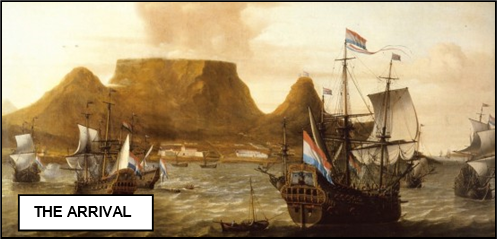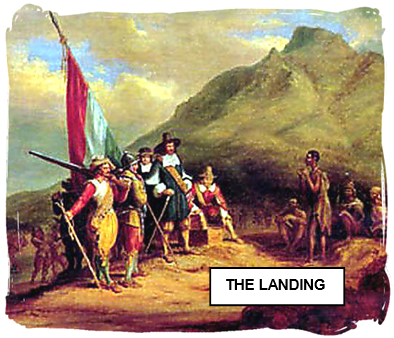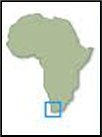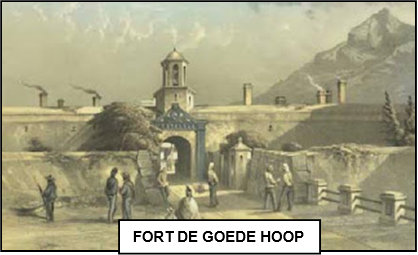


xxxxxThe Portuguese navigator Antonio de Saldanha was the first European to anchor in Table Bay -
SOUTH AFRICA -
Acknowledgements
Arrival: by the Dutch painter Aernout Smit (c1642-
 xxxxxThexPortuguese navigator Antonio de Saldanha was the first European to anchor in Table Bay and climb Table Mountain. Arriving there in the early part of the 16th century he found only a few hundred natives inhabiting the area, living by hunting and herding. (The Bay of Saldanha, some 65 miles north of Table Bay, was later named after him). Then in 1647 a Dutch vessel, the Haarlem, was wrecked in the bay, and the survivors were so impressed with the region and the willingness of its people to barter, that the Dutch East India Company decided to set up a permanent station there to assist their vessels travelling to and from the Far East, and with the hope of extending trade into the interior.
xxxxxThexPortuguese navigator Antonio de Saldanha was the first European to anchor in Table Bay and climb Table Mountain. Arriving there in the early part of the 16th century he found only a few hundred natives inhabiting the area, living by hunting and herding. (The Bay of Saldanha, some 65 miles north of Table Bay, was later named after him). Then in 1647 a Dutch vessel, the Haarlem, was wrecked in the bay, and the survivors were so impressed with the region and the willingness of its people to barter, that the Dutch East India Company decided to set up a permanent station there to assist their vessels travelling to and from the Far East, and with the hope of extending trade into the interior.

 xxxxxInxApril 1652 Commander Jan van Riebeeck and 125 men arrived at the Cape (illustrated) and set about the task of building a fort and growing crops. The settlement quickly began to expand and in 1657, on the advice of Riebeeck, a number of company servants were released from their employment in order to become farmers and expand the cultivation of the land on the company's behalf. The following year the first shiploads of slaves began to arrive in the station. This enabled the establishment of a second farm at Newlands, inland from Table Mountain, and vineyards were set up on the slopes of Wynberg (Wine Mountain).
xxxxxInxApril 1652 Commander Jan van Riebeeck and 125 men arrived at the Cape (illustrated) and set about the task of building a fort and growing crops. The settlement quickly began to expand and in 1657, on the advice of Riebeeck, a number of company servants were released from their employment in order to become farmers and expand the cultivation of the land on the company's behalf. The following year the first shiploads of slaves began to arrive in the station. This enabled the establishment of a second farm at Newlands, inland from Table Mountain, and vineyards were set up on the slopes of Wynberg (Wine Mountain).
xxxxxOver the fourteen years that Riebeeck was commander, the area developed at a pace. A fort was constructed, together with a mill and a hospital, and to ensure the safe landing of supplies, a jetty was built for visiting ships. And, seeing the need for the settlement to be self sufficient, he encouraged the development of fishing, whaling and sealing, the growing of food crops, and the keeping of livestock. This was no longer an outpost of the Dutch East India Company – this was a nation in the making.
 xxxxxApart from the Portuguese trading stations in Mozambique and Angola -
xxxxxApart from the Portuguese trading stations in Mozambique and Angola -

xxxxxIncidentally, a statue of Riebeeck, the founder of the colony, stands today in Cape Town. Nearby is a statue of his wife, Marie. She gave birth to no less than sixteen children and it is hardly surprising, therefore, that she is shown expecting a child. This is believed to be the only statue in the world of a pregnant woman.
Six years after they began to settle at Table Bay, the Dutch also completed their conquest of Ceylon, expelling the Portuguese from Jaffnapatam, their last possession on the island. In South America, however, it was a different story. In 1654 the Dutch were finally driven out of Brazil by the Portuguese.
CW-


